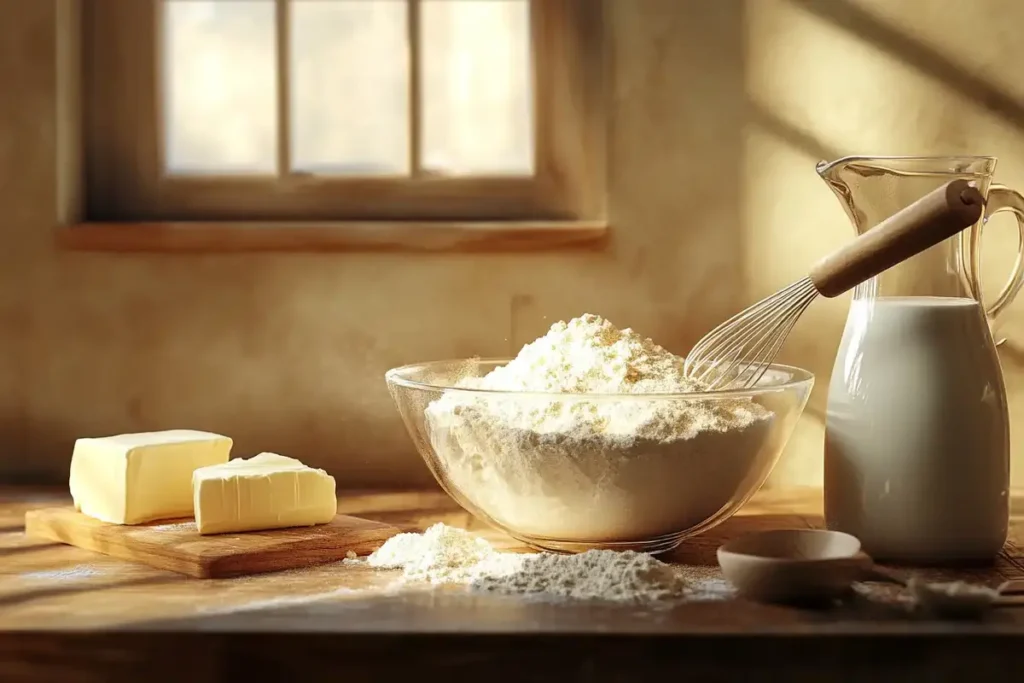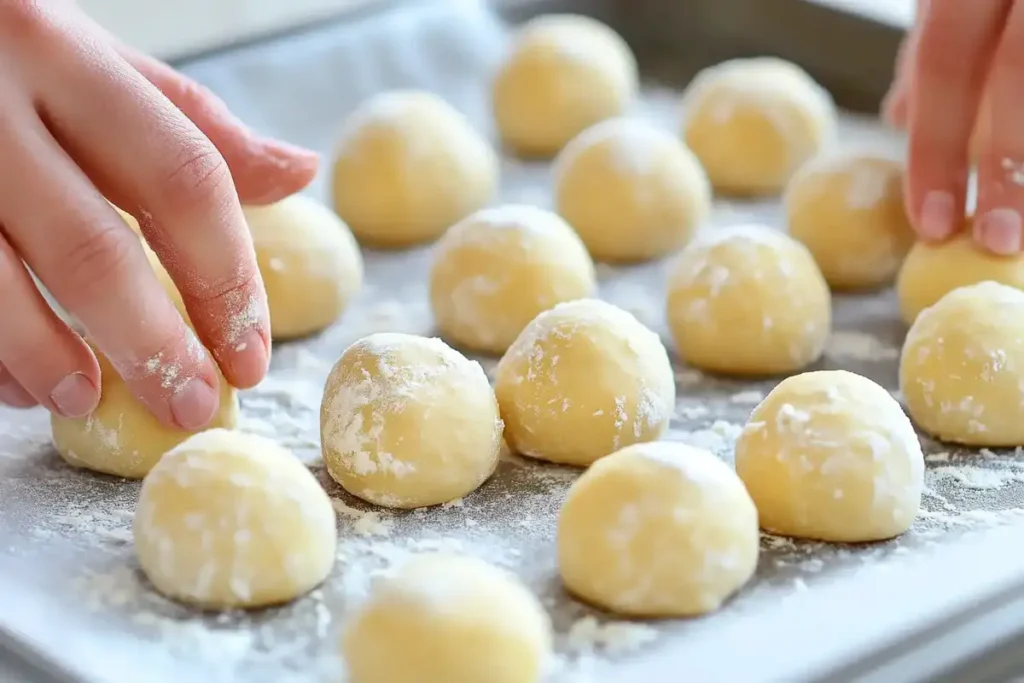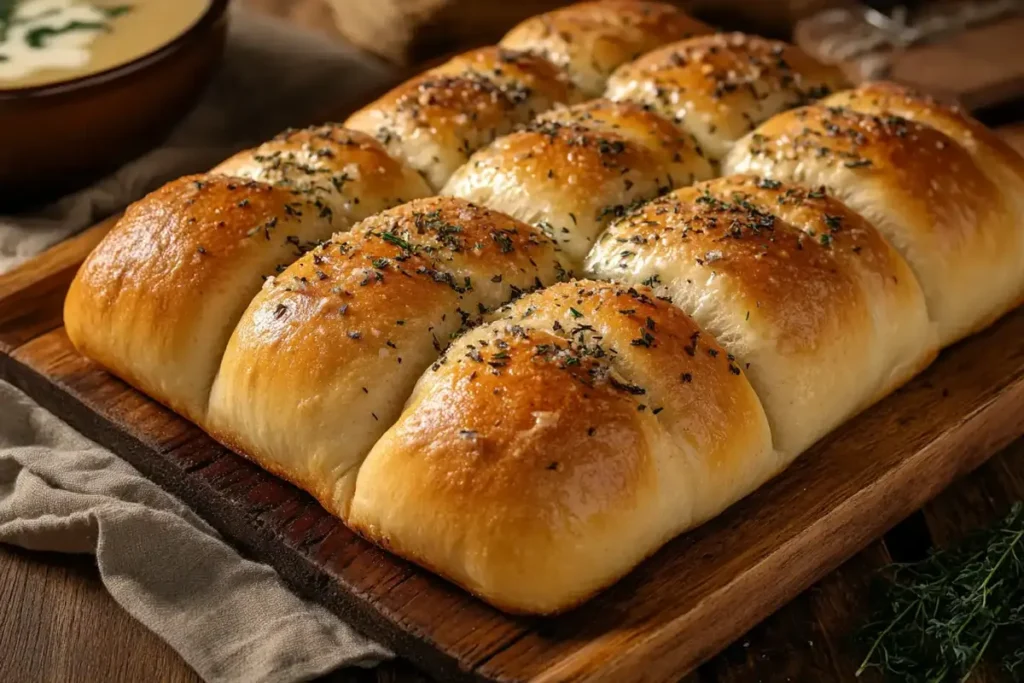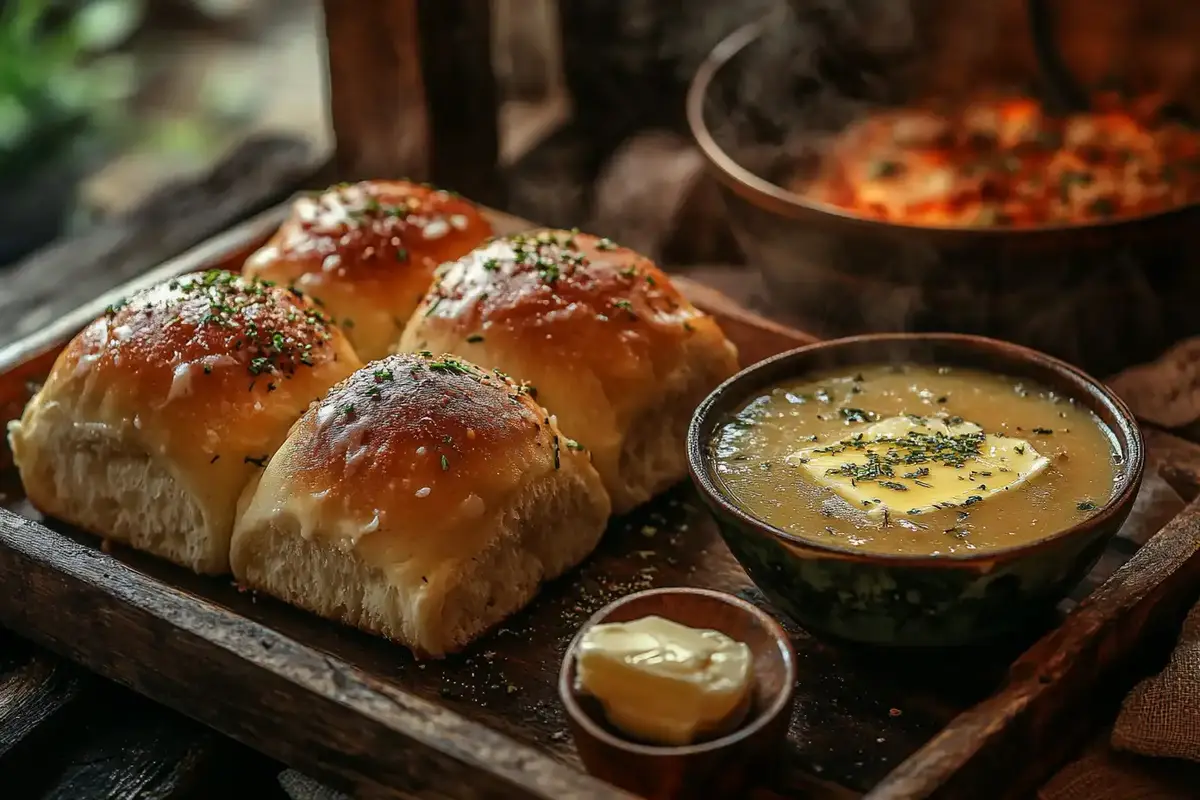There’s something universally comforting about the aroma of freshly baked bread wafting through your kitchen. But when time is short or you’ve run out of yeast, the idea of baking bread might feel like an impossible dream. That’s where this dinner roll recipe no yeast comes to the rescue!
This recipe takes the guesswork out of breadmaking. Gone are the days of waiting hours for dough to rise or struggling with the unpredictability of yeast. Instead, you’ll use simple ingredients and straightforward techniques to make soft, fluffy dinner rolls in no time at all.
Whether you’re preparing a quick side dish for a hearty stew or whipping up something special for a family gathering, these rolls are incredibly versatile. Plus, they’re customizable you can add herbs, cheese, or even a touch of sweetness to match your taste.
In this article, we’ll guide you step-by-step through the process of making these no-yeast rolls. You’ll learn everything from selecting the right ingredients to troubleshooting common baking issues. By the end, you’ll have warm, golden rolls that are ready to steal the show at any meal.
Table of Contents
Introduction and Understanding No-Yeast Dinner Rolls
Importance of Dinner Rolls in Meals
Dinner rolls are more than just bread they’re a warm hug on your plate! Perfect for soaking up soups, complementing main dishes, or even enjoyed on their own, these little buns are a mealtime staple. While yeast-based rolls are beloved for their rise and texture, not everyone has the time or patience for yeast to work its magic.
Challenges with Yeast-Based Recipes
Yeast recipes often demand long proofing times, precision, and the perfect temperature for the dough to rise. Add in the occasional inconvenience of running out of yeast, and these recipes can seem more trouble than they’re worth.
Benefits of No-Yeast Dinner Rolls
Now here’s the kicker: no-yeast dinner rolls eliminate these hurdles. These quick bread rely on baking powder or similar leavening agents, letting you skip the waiting game. Not only are they simpler to make, but they also deliver a soft, fluffy texture that rivals their yeast-based counterparts.
What Are No-Yeast Dinner Rolls?
In the simplest terms, no-yeast dinner rolls are bread rolls made without traditional yeast as the leavening agent. Instead, they rely on chemical leaveners like baking powder or baking soda to create that airy, tender crumb. They’re quick, reliable, and perfect for last-minute baking adventures.
Comparison with Yeast-Based Rolls
While yeast-based rolls boast a distinctive rise and flavor from fermentation, no-yeast rolls bring speed and ease to the table. They’re perfect for busy weekdays, quick family dinners, or when you need a fast bread fix.
Advantages of No-Yeast Dinner Rolls
- Time Efficiency: These rolls are ready in under an hour, start to finish.
- Simplicity: With fewer steps and ingredients, the recipe is beginner-friendly.
- Ingredient Accessibility: Everything you need is likely already in your pantry—no specialty items required!
Ingredients and Equipment
Essential Ingredients
No-yeast dinner rolls rely on basic, pantry-staple ingredients that come together in a pinch. Each component plays a vital role in achieving the perfect texture and flavor. Here’s what you’ll need:
All-Purpose Flour
The backbone of any good bread recipe, all-purpose flour provides the structure for your rolls. It’s versatile, easy to work with, and yields soft, tender bread. For a healthier twist, you can substitute part of it with whole wheat flour, but keep in mind this may affect the texture.
Baking Powder as a Leavening Agent
Baking powder does the heavy lifting in this recipe literally! It creates tiny air bubbles in the dough, giving the rolls their rise without the need for yeast. Always ensure your baking powder is fresh, as its potency diminishes over time.
Dairy Components: Milk, Butter, and Yogurt
- Milk: Adds moisture and a touch of sweetness.
- Butter: Gives the rolls a rich, melt-in-your-mouth flavor. Melted butter also enhances the dough’s softness.
- Yogurt: Acts as a natural tenderizer, keeping the rolls fluffy and slightly tangy. You can substitute this with sour cream if needed.
Optional Add-ins: Herbs and Cheeses
Take your no-yeast dinner rolls to the next level by incorporating extras like chopped rosemary, grated cheddar, or garlic powder. These add-ins transform your basic rolls into something gourmet and delightful.
Necessary Equipment
While the ingredients are simple, having the right tools ensures a smooth baking process.
Mixing Bowls
You’ll need at least two mixing bowls one for dry ingredients and one for wet. A sturdy, medium-sized bowl is ideal for combining the dough.
Baking Trays
Choose a non-stick or parchment-lined baking tray to prevent sticking. For more even baking, a light-colored tray is preferable.
Measuring Tools
Accurate measurements are crucial. Use a set of measuring cups and spoons to avoid guesswork. A kitchen scale is also handy for precision, especially with flour.
Oven Specifics
Ensure your oven is preheated to the right temperature. An oven thermometer can help you verify accuracy, as incorrect temperatures can make or break your rolls.
Step-by-Step Preparation Guide
Preparing the Dough
Crafting the perfect dough is the foundation of these fluffy no-yeast dinner rolls. Follow these steps for a foolproof start:
Mixing Dry Ingredients
In a large mixing bowl, combine all-purpose flour, baking powder, and a pinch of salt. Whisk the ingredients together to evenly distribute the leavening agent. This step ensures that your rolls rise uniformly and have a balanced flavor.

Incorporating Wet Ingredients
In a separate bowl, whisk together milk, melted butter, and yogurt until smooth. Slowly pour this mixture into the dry ingredients. Stir gently with a wooden spoon or spatula until a shaggy dough forms. Avoid overmixing, as it can make the rolls dense.
Achieving the Right Dough Consistency
The dough should be soft and slightly sticky but not overly wet. If it feels too dry, add a splash of milk; if it’s too sticky, sprinkle in a bit more flour. Once combined, let the dough rest for 5–10 minutes to allow the flour to fully hydrate.
Shaping the Rolls
Shaping the dough is where creativity and precision come into play. Here’s how to get those picture-perfect rolls:
Dividing the Dough Evenly
Transfer the dough to a lightly floured surface. Using a sharp knife or dough scraper, divide it into equal portions. For uniform rolls, aim for pieces weighing around 2–3 ounces each.
Techniques for Shaping
Take each piece of dough and gently roll it into a ball. Cup your hand over the dough and use a circular motion to smooth out the surface. This creates rolls that bake evenly and look polished.

Preparing for Baking
Arrange the dough balls on a parchment-lined baking tray, leaving about an inch of space between each one. For added flavor, brush the tops with melted butter or sprinkle with a touch of sea salt.
Baking Process
The baking step is where all your hard work comes to life, filling your kitchen with that irresistible bread aroma.
Preheating the Oven
Preheat your oven to 375°F (190°C). This ensures the rolls bake evenly from the moment they go in.
Optimal Baking Temperatures
Place the tray in the center of the oven and bake for 18–22 minutes. Keep an eye on the rolls; they should puff up beautifully and develop a light golden-brown color.
Determining Doneness
To check if the rolls are done, tap the top of one gently it should sound hollow. You can also insert a toothpick; if it comes out clean, they’re ready to go.
Variations and Serving Suggestions
Flavor Variations
One of the best things about no-yeast dinner rolls is their versatility. You can easily adapt the recipe to suit your taste or make it a showstopper on your dinner table.
Herb-Infused Rolls
Add fresh or dried herbs like rosemary, thyme, or parsley to the dough for an aromatic twist. A sprinkle of garlic powder or onion flakes also enhances the savory profile. For an elegant touch, press fresh rosemary sprigs on top of the rolls before baking.
Cheese-Filled Options
For a decadent upgrade, stuff the center of each dough ball with a cube of cheese cheddar, mozzarella, or gouda work wonderfully. As the rolls bake, the cheese melts, creating gooey, irresistible pockets of flavor.
Sweet Adaptations
Turn your rolls into a sweet treat by adding a tablespoon of sugar, cinnamon, or even nutmeg to the dough. Top with a light glaze made from powdered sugar and milk after baking for a dessert-worthy option.
Serving Suggestions
Complementing your freshly baked no-yeast dinner rolls with the right accompaniments elevates the entire meal.
Pairing with Main Courses
These rolls are a perfect side for hearty meals like roasted chicken, beef stew, or creamy pasta dishes. They also work beautifully alongside lighter meals like salads or soups, adding a comforting touch.

Suitable Spreads and Accompaniments
Serve your rolls with butter, jam, or honey for a classic pairing. For a savory spin, try garlic butter, herbed cream cheese, or a dollop of whipped ricotta. Warm rolls served with these spreads are guaranteed to impress your guests.
Troubleshooting and FAQs
Common Issues and Solutions
Baking can sometimes feel like a science experiment. Here’s how to troubleshoot common problems with your no-yeast dinner rolls:
Dense Texture Remedies
If your rolls turn out dense, it’s often due to overmixing the dough. Mix just until the ingredients combine to avoid overdeveloping the gluten. Additionally, ensure your baking powder is fresh and not expired.
Preventing Dryness
Dry rolls can result from too much flour or overbaking. Measure your flour accurately (use a kitchen scale, if possible) and keep an eye on baking time. Adding an extra tablespoon of yogurt or milk to the dough can also boost moisture.
Achieving a Golden Crust
For rolls that are golden and glossy, brush them with melted butter before baking. You can also add a dash of milk or egg wash for added shine and color.
FAQs About: Dinner Roll Recipe No Yeast
Can I use whole wheat flour instead of all-purpose flour?
Yes, but note that whole wheat flour is denser and can alter the texture of your rolls. To balance it out, use half whole wheat and half all-purpose flour.
How do I store leftover no-yeast dinner rolls?
Place leftover rolls in an airtight container or wrap them in foil. Store them at room temperature for up to two days or in the fridge for up to a week.
Can I freeze the dough for later use?
Absolutely! Shape the rolls, then freeze them on a baking sheet. Once frozen, transfer to a ziplock bag. When ready to bake, thaw in the fridge overnight and bake as directed.
What can I substitute for dairy ingredients in the recipe?
For a dairy-free version, use plant-based milk like almond or oat milk. Replace butter with coconut oil or dairy-free margarine, and swap yogurt with unsweetened applesauce or a dairy-free alternative.
How can I make gluten-free no-yeast dinner rolls?
Use a gluten-free all-purpose flour blend and ensure all other ingredients are gluten-free. Adding a teaspoon of xanthan gum to the mix can improve texture and elasticity.
Why didn’t my rolls rise as expected?
While these rolls don’t rely on yeast, they still need proper aeration. Ensure your baking powder is active, and avoid over-kneading the dough, which can inhibit rising.
Conclusion
Making delicious, fluffy no-yeast dinner rolls doesn’t have to be a daunting task. Throughout this guide, we’ve explored everything from selecting the right ingredients and equipment to mastering the baking process. You’ve also learned about creative variations and how to troubleshoot common baking issues.
These rolls are a lifesaver when you’re short on time or ingredients but still want to impress with homemade bread. With just a handful of pantry staples and simple techniques, you can create dinner rolls that are every bit as satisfying as their yeast-based counterparts.
So, roll up your sleeves, preheat your oven, and give this recipe a try. You’ll be amazed at how quickly these rolls come together and how quickly they disappear from the table!

